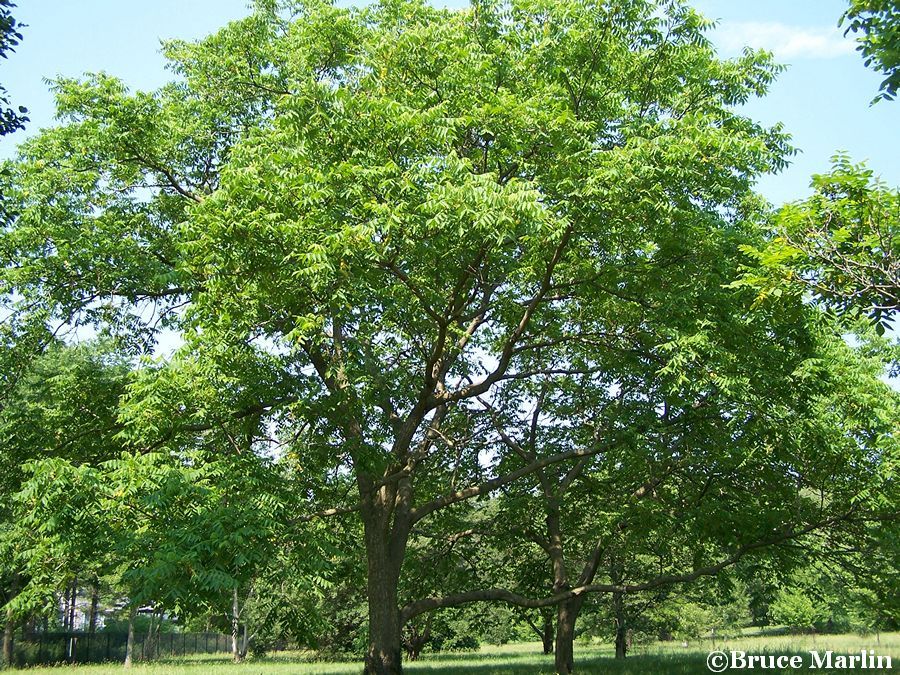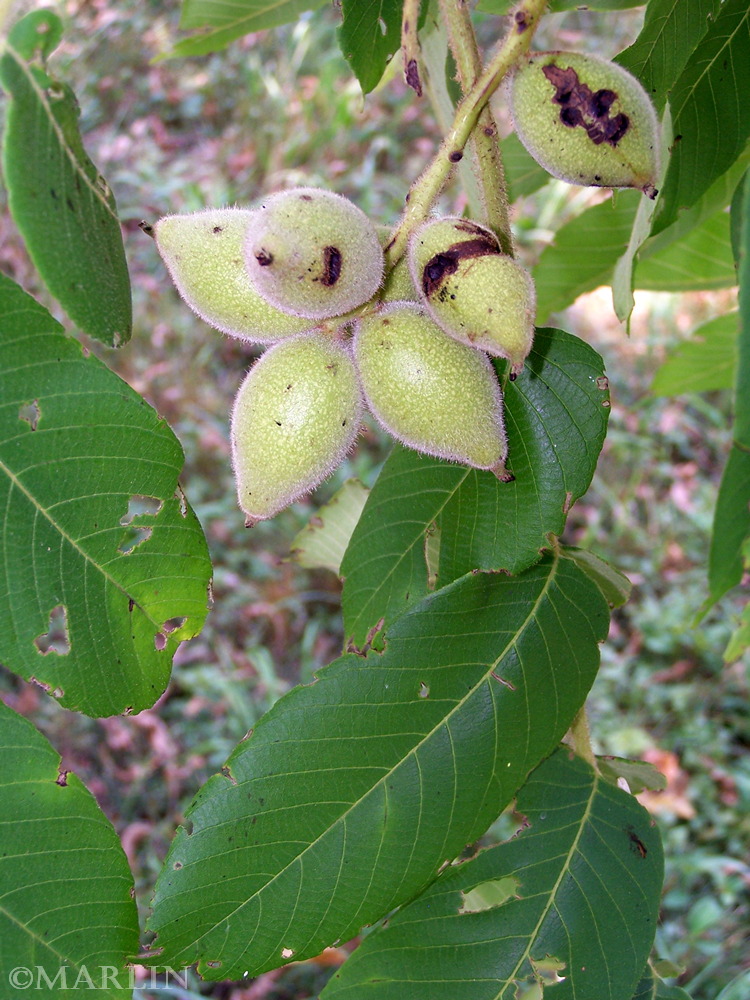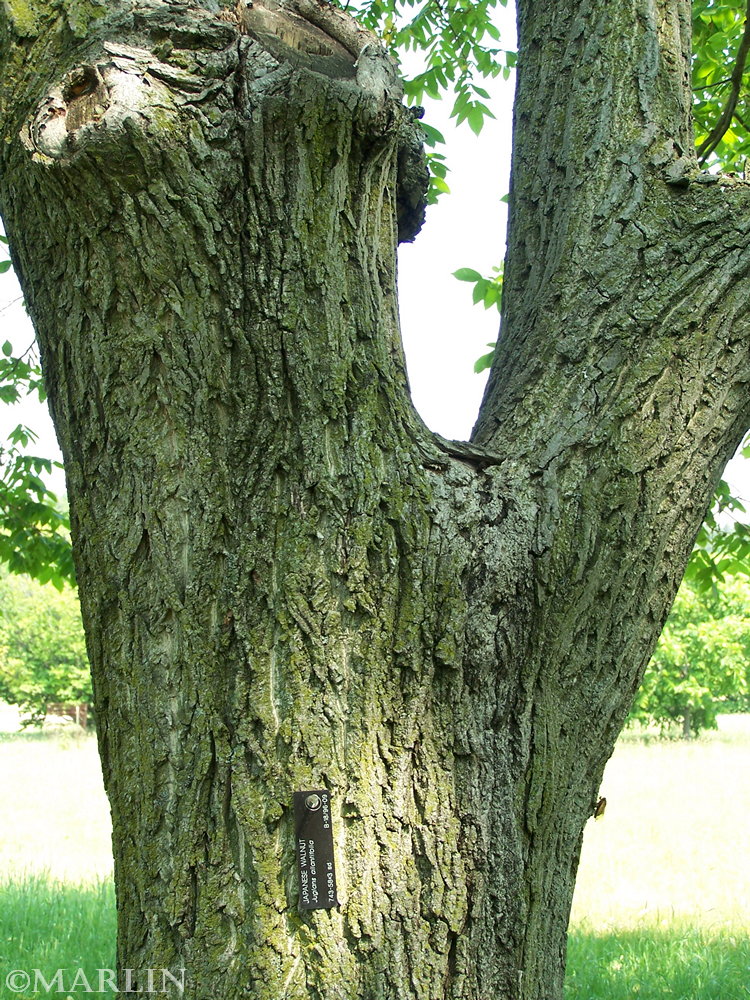Japanese Walnut – Juglans ailantifolia

Family Juglandaceae – Nut Trees – Walnut, Hickory, Butternut, Pecan
Native to Japan; introduced to North America circa 1860. Hardy to USDA Zone 5
Japanese Walnut is a deciduous tree, to 40-65 ft (15-20 m) tall, with a broad, round crown. The leaves are alternate, pinnately compound, 60 cm long, odd number of leaflets, 11 to 17. Each leaflet ovate-oblong to oblong, 7-18 cm long, serrate, upper surface bright green. Pubescent at first but then glabrous or nearly, pubescent below, and densely granular and pubescent on the midrib and leaf stalk (rachis). Male catkins 15-30 cm long; female catkins with 12-20 flowers. The fruit is globose to ovoid, sticky, rugose, thick shelled. Tree needs full sun.
Some trees in the genus Juglans, most notably the Black and Persian walnuts, produce a chemical, known as juglone, which can inhibit the growth of other plants. These chemicals are dissolved out of the leaves when it rains and are washed down to the ground below, reducing the growth of plants under the tree. The roots of many members of this genus produce substances that are toxic to many plant species.
Many plants such as tomato, potato, blackberry, blueberry, azalea, mountain laurel, rhododendron, red pine and apple may be injured or killed within one to two months of growth within the root zone of these trees. The toxic zone from a mature tree occurs on average in a 50 to 60 foot radius from the trunk, but can be up to 80 feet. The area affected extends outward each year as a tree enlarges. Young trees two to eight feet high can have a root diameter twice the height of the top of the tree, with susceptible plants dead within the root zone and dying at the margins.
Not all plants are sensitive to juglone. Many trees, vines, shrubs, groundcovers, annuals and perennials will grow in close proximity to a walnut tree. Certain cultivars of “resistant” species are reported to do poorly. Black walnut has been recommended for pastures on hillsides in the Ohio Valley and Appalachian mountain regions. Trees hold the soil, prevent erosion and provide shade for cattle. The beneficial effect of black walnut on pastures in encouraging the growth of Kentucky bluegrass (Poa pratensis L.) and other grasses appears to be valid as long as there is sufficient sunlight and water.
Family Juglandaceae – Nut Trees – Walnut, Hickory, Butternut, Pecan
Trees Index | Pine Family | Beech, Oak | Nut Trees | Birch Family | Magnolias
Tree Encyclopedia / North American Insects & Spiders is dedicated to providing family-friendly educational
resources for our friends around the world through large images and macro photographs of flora and fauna.


